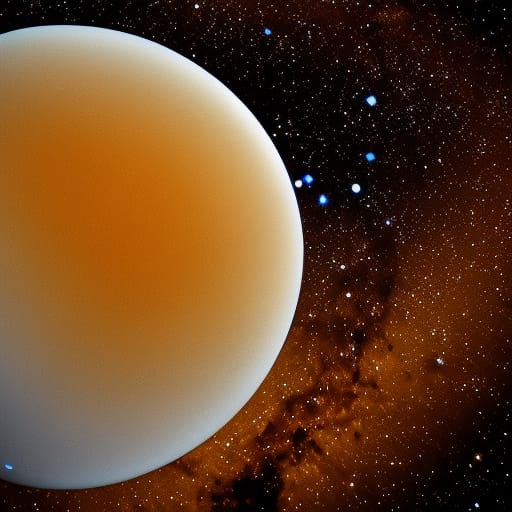Space: Venus

Venus is the second planet from the Sun and Earth's closest neighbor in the solar system. It has some unique features that make it an intriguing subject of study. Here are the important aspects of Venus:
Distance and size: Venus is located about 108.2 million kilometers (67.2 million miles) from the Sun. With a diameter of approximately 12,104 kilometers (7,521 miles), it is similar in size and composition to Earth, earning it the nickname "Earth's twin."
Composition: Venus is a terrestrial planet with a rocky surface and a dense atmosphere. The atmosphere is primarily composed of carbon dioxide (96.5%) and a small amount of nitrogen (3.5%), with trace amounts of other gases. The planet's thick cloud cover consists of sulfuric acid droplets, which create a powerful greenhouse effect.
Orbital and rotation period: Venus takes 225 Earth days to complete one orbit around the Sun. Interestingly, it has a retrograde rotation, meaning it rotates on its axis in the opposite direction of most planets in our solar system. A single rotation takes 243 Earth days, making its day longer than its year.
Temperature: Venus has an average surface temperature of approximately 464°C (867°F), which is hotter than any other planet in our solar system, including Mercury, despite being further away from the Sun. This extreme temperature is a result of the greenhouse effect caused by its thick atmosphere.
Surface features: The surface of Venus consists mainly of volcanic plains, with a few highlands and large volcanic structures, such as Maat Mons and Maxwell Montes. The planet has few impact craters compared to other terrestrial planets, suggesting that its surface is relatively young.
Atmospheric pressure: Venus has a surface pressure 92 times greater than Earth's, which is equivalent to the pressure experienced at a depth of about 900 meters (3,000 feet) underwater on Earth.
Magnetic field: Venus does not have a significant magnetic field, likely due to its slow rotation and the absence of a dynamo effect in its core.
Exploration: Venus has been studied through a series of flyby, orbiter, and lander missions since the 1960s. The Soviet Union's Venera program was the first to successfully land on the planet and send back data, including images of its surface. More recently, NASA's Magellan mission (1990-1994) used radar mapping to reveal detailed surface features, and the European Space Agency's Venus Express (2005-2014) studied the planet's atmosphere and climate.
Lack of moons: Like Mercury, Venus has no natural satellites (moons).
Observing Venus: Venus is one of the brightest objects in the night sky and is often referred to as the "evening star" or "morning star" because it is visible shortly after sunset or before sunrise. It is easily seen with the naked eye when it is not too close to the Sun.
Mythology: Venus is named after the Roman goddess of love and beauty. In Greek mythology, the planet was known as Aphrodite. The association with beauty and brightness comes from the planet's appearance as a bright, shining object in the sky.